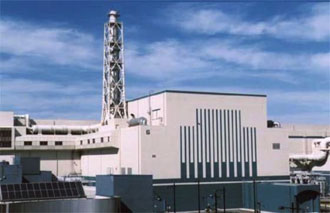A great irony of our time is that the only nation to feel the awful power of nuclear fission bombs is also the nation that seems to embrace the awful risks of even the peaceful use of nuclear fission.
Hiroshima, Nagasaki, Fukushima. All are Japanese cities now indelibly linked with the dangers of nuclear power. The mere fact that the sole victim of nuclear bombs should have so thoroughly embraced nuclear power isn’t remarkable in itself. After all, with its scarcity of energy resources, Japan has few options.
Currently 80% of Japan’s energy requirements are met by imported fuel. In the abstract nuclear power is a rational alternative to greater dependence on oil imports from the volatile Middle East. Japan currently meets 30% of its electricity needs from 50 operating nuclear reactors. The nation’s aggressive nuclear energy strategy envisions the building of more reactors to meet 41% of electricity needs by 2017 and 50% by 2030.
What is remarkable is that Japan didn’t pause to reconsider its nuclear strategy even after the shutdown of the 7 reactors of the Kashiwazaki-Kariwa nuclear power plant in Niigata Prefecture — the world’s largest nuclear power plant — following the 6.6-magnitude Chuetsu quake that hit 19 kilometers (12 miles) offshore in July of 2007. Coincidentally, that plant is operated by Tepco, the operator of the Fukushima I plant.
The reactors shut themselves down automatically as they were designed to do when the quake struck. The only damage was a fire at the electric transformer at Unit 3 which was put out within 2 hours. It charred the 3-story transformer building but caused no damage to the reactor housing. However, small amounts of radioactive water were found spilled on the plant floor and into the sea. Trace amounts of radioactive material, including cobalt-60 and chromium-51, were released into the air. IAEA and various Japanese safety agencies deemed these amounts too small to pose a safety hazard, but the news had a devastating impact on the region’s tourism industry for the rest of the year. Tepco stock also plunged 7.5% on news of the shutdown.
Substantial work was ordered to reinforce reactor structure after it became apparent that the K-K plant had been built to withstand a maximum of a 6.5-magnitude quake but is likely sitting directly over a major geological fault. The first of the reactors wasn’t restarted until August 26, 2009, 21 months after the Chuetsu quake. The second was restarted on May 31, 2010 and was returned to the power grid by June 5, 2010. A third was sending reconnected to the grid on November 26, 2010
As of today Tepco is still trying to secure Kashiwazaki city’s approval to restart three of the K-K plant’s reactors. The mayor has said he has no intention of approving the request before the crisis at the Fukushima I plant has been fully resolved — a process likely to take at least another six to nine months.
Tepco remains under a cloud of suspicion not only because of Fukushima but because of its history of problems with safety disclosures since it was caught falsifying the K-K plant’s safety records in 2002. The power company has become one of the scapegoats for the inevitable cost of Japan’s decision to push ahead with its nuclear power strategy in the face of its horrific history with earthquakes.
The Great Kanto Quake —which had a magnitude of 7.9 — killed between 100,000 and 140,000 in 1923. The 7.3-magnitude Kobe quake aka Great Hanshin Earthquake of 1995 killed 6,434 people. The 9.0-magnitude March 11 quake is estimated to have taken 28,000 lives between the dead and the missing. If a quake of that magnitude were to strike near Tokyo, Osaka or even Shizuoka, the casualty figures would be far worse. A disaster like that could even lead to the collapse of Japan’s economy for years.
Yet there has been little sign that Japan is reconsidering its strategy of relying on nuclear power plants to meets electricity needs any more than there was a move to limit the construction of skyscrapers along its coastal mega-cities after past earthquakes. One can’t help wondering how much the clout of zaibatsu like Mitsubishi or Hitachi — which build Japan’s nuclear plants — is preventing a rational assessment of the real cost of nuclear power as against alternatives.

